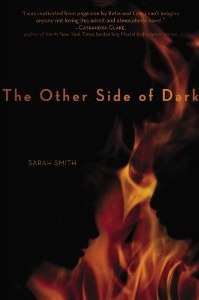The Other Side of Dark
by Sarah Smith
Two twice-haunted children meet in the park. Law Walker is biracial, his father is an angry and wildly successful Harvard historian, his mother is an angry and wildly successful preservationist, and he’s haunted by their expectations, their demands, and by the weight that history and society heaps on the shoulders of a black boy of whom much is expected. Katey Mullens has a simpler lot; recently orphaned, she sees ghosts and is haunted by the fear that she’s going mad. Naturally, they fall in love, and inevitably their love finds expression in a hopeless school project – saving the derelict Pinebank mansion from city planners.
The book is complicated by the fact that Pinebank and the crusade to save it were real, the principal actors in that struggle feature prominently in its pages, and so this Victorian-revival Gothic novel cannot have a proper villain. Smith finds an ingenious solution to the problem and executes it so well that most readers won’t notice the unexpected genre shift.
Both Law and Katey subscribe to the conviction that the experience and memory of slavery is the heart of the American experience. And they are right. But Black folk are not alone in saying, “we were slaves” or in gathering to tell the tell:
Still in all, every night we does the tell, so that we 'member who we was and where we came from... but most of all we 'members the man that finded us, him that came the salvage. And we lights the city, not just for him, but for all of them that are still out there.
Or, for that matter:
Debout, les forçats de la faim.
So many voices of the past need such careful attention here that occasionally John and Katey find themselves aswim in pools of exposition. This is realistic, too – high school kids philosophize like there’s no tomorrow, and Smith has a remarkable flair for carrying thoughtfully nuanced ideas into a lively plot – but perhaps some episodes carry more exposition than they can quite lift without straining. The book’s YA point of view tends to flatten the characters of parents who might otherwise lend a hand with the ideas as well as obstructing desire. The YA label may also explain why Katey’s very plausible suicidal ideas – or at least acceptance of imminent death or insanity – are not explored very deeply. Smith is already courageously exploring a topic so sensitive that it is almost unmentionable, and asking her to undertake a second within the compass of a small book and in the crumbling walls of this tottering house might have invited wholesale collapse.
